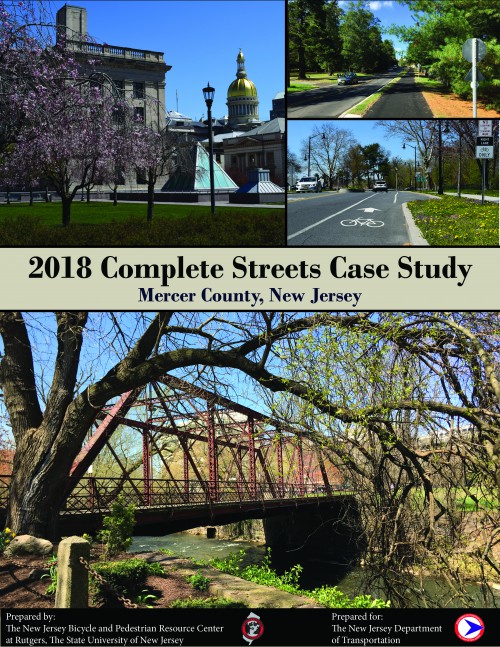In 2009, the New Jersey Department of Transportation adopted a Complete Streets policy which defined a complete street as one designed to provide safe access for all users by implementing a comprehensive integrated multi-modal network of transportation options. The benefits include increased safety for all users, connections between origins and destinations, and the promotion of healthier and more livable communities. Since the policy’s adoption, Complete Streets has built momentum throughout the state. As of December 2018, 8 counties and 148 municipalities have followed the lead and adopted their own Complete Streets policy.
The New Jersey Bicycle and Pedestrian Resource Center, part of the Alan M. Voorhees Transportation Center at Rutgers University, has developed a series of case studies intended to highlight Complete Streets leaders in New Jersey. Previous case studies, published in 2016 and 2017, included Passaic County, the Borough of Somerville, and Morristown and can be found on the BPRC website (njbikeped.org). The purpose of this report, funded by the New Jersey Department of Transportation, is to highlight Mercer County’s Complete Streets achievements. The report is based on findings provided in interviews with Matthew Lawson, Mercer County Principal Transportation Planner, Matthew Zochowski, Mercer County Assistant Planner, and Jerry Foster, Greater Mercer Transportation Management Association.
Mercer County and its municipalities have been proactive in developing and adopting Complete Streets policies. In fact, the county was the first in the state to witness all of its municipalities pass a Complete Streets policy. Mercer County represents an inspiration to all of New Jersey as it is home to both dense urban areas and rural suburban locales. Despite these differences, the county has promoted and enjoyed a culture of active transportation throughout.
The report begins with a summary of key findings, followed by background information including historical, demographic and land use data collected from county and Census documents. This information is essential in understanding the context of Complete Streets in Mercer County. The report then explores the implementation of Complete Streets in Mercer County, including the passing of policies in all of the county’s municipalities. Successes and challenges are then highlighted for the benefit of other communities looking to implement Complete Streets and a number of next steps provide readers with insight into the county’s future Complete Street efforts. The research team hopes that this report will serve as a valuable tool for engineers, planners, elected officials, and advocates who want to move forward with Complete Streets in their communities.
Read full report: Complete Streets Case Study: Mercer County, New Jersey (2018)

